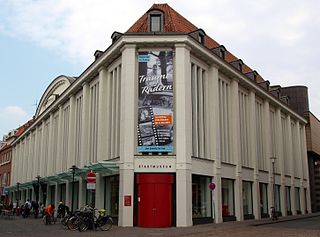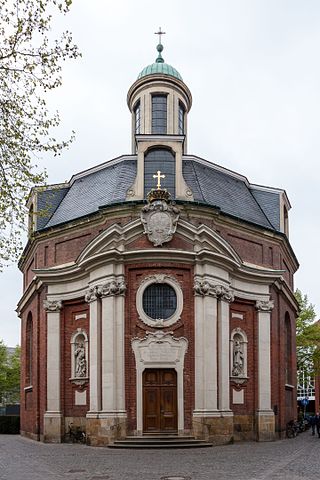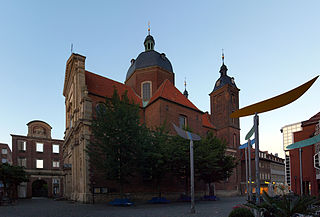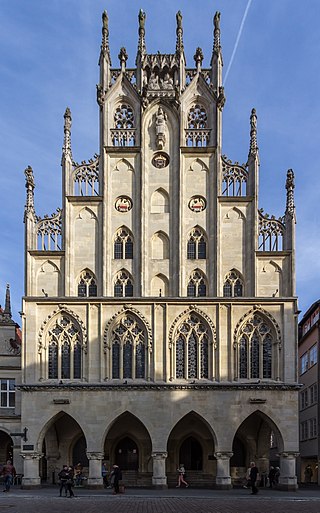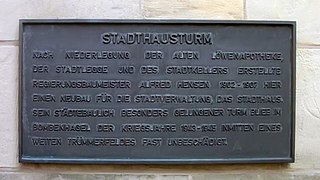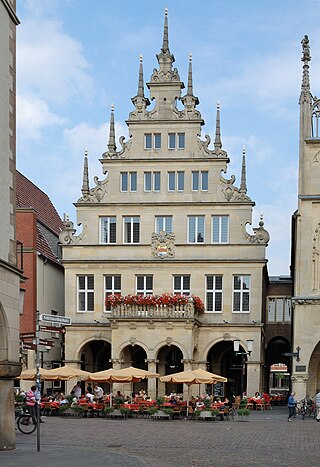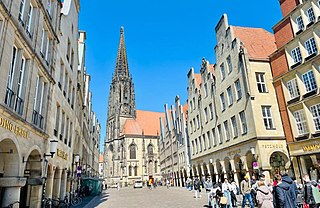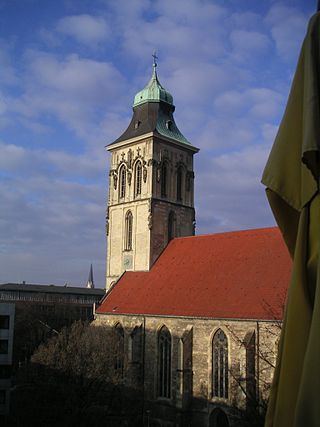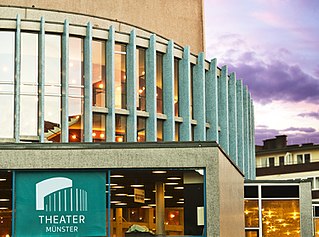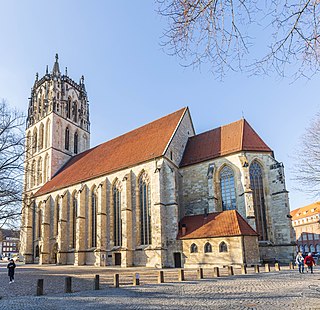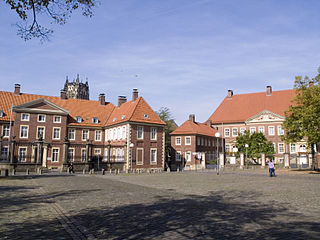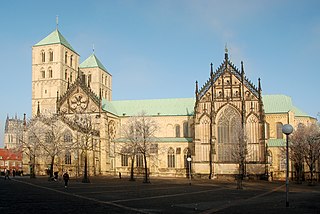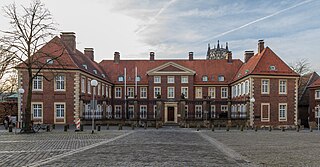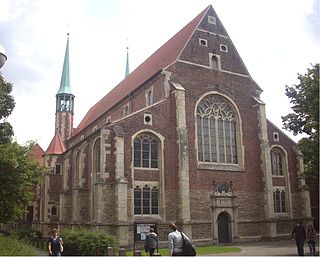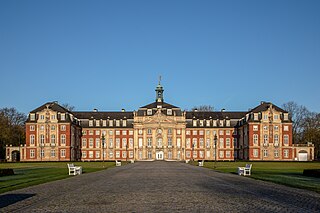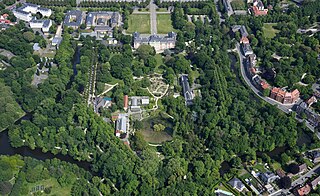Self-guided Sightseeing Tour #2 in Münster, Germany
Legend
Tour Facts
5.9 km
73 m
Experience Münster in Germany in a whole new way with our free self-guided sightseeing tour. This site not only offers you practical information and insider tips, but also a rich variety of activities and sights you shouldn't miss. Whether you love art and culture, want to explore historical sites or simply want to experience the vibrant atmosphere of a lively city - you'll find everything you need for your personal adventure here.
Individual Sights in MünsterSight 1: Stadtmuseum
The Stadtmuseum Münster deals with the history of the Westphalian city of Münster.
Sight 2: Erbdrostenhof
Get Ticket*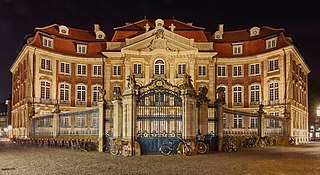
The Erbdrostenhof is a three-wing late Baroque palace in Münster, North-Rhine-Westphalia, Germany. It is located on Salzstraße. It was designed by Johann Conrad Schlaun for Adolf Heidenreich Freiherr Droste zu Vischering, Erbdrost of Münster and built between 1753 and 1757. Johann Christoph Manskirch produced sculptures for the building, whilst Nikolaus Loder painted frescoes in the interior - the latter were damaged during World War Two and restored between 1965 and 1967 by the Austrian restorer Paul Reckendorfer.
Sight 3: Clemenskirche
The Clemenskirche in the Westphalian city of Münster is a baroque monastery and hospital church built according to plans by Johann Conrad Schlaun between 1745 and 1753 for the Brothers of Mercy. The monastery was dissolved in 1811.
Sight 4: Dominikanerkirche
The Dominican Church is a church building in the centre of Münster on Salzstraße, not far from the St. Lambert's Church.
Sight 5: Historisches Rathaus
The historic town hall of Münster, Prinzipalmarkt 10, is one of the city's landmarks, along with St. Paul's Cathedral.
Sight 6: Stadthausturm Münster
The Stadthaus tower in Münster, Westphalia, is the only surviving part of the former town hall. It is located at the southern end of the Prinzipalmarkt.
Sight 7: Stadtweinhaus
The Stadtweinhaus of Münster in Westphalia on the Prinzipalmarkt is a representative annex of the historic town hall of Münster from the 17th century and one of the city's landmarks.
Sight 8: St. Lamberti
St Lambert's Church is a Roman Catholic church building in Münster (Westphalia) in Germany, dedicated to Lambert of Maastricht. Its present building is the most significant example of Westphalian late Gothic architecture. It lies on the north side of the Prinzipalmarkt in the city centre. Until the early 20th century, the Roggenmarkt contained the Drubbels district of housing. To the church's east lies the Alte Fischmarkt and the Salzstraße, whilst between the church and the Salzstraße is the Lambertikirchplatz with the Lambertibrunnen.
Sight 9: Martinikirche
St. Martini is one of the oldest Roman Catholic sacred buildings in the Westphalian Minster under the patronage of St. Martin and was built around the 1180s. It is located on the corner of Martinistraße and Neubrückenstraße near the theatre.
Sight 10: Theater Münster
Theater Münster is a municipal theatre in Münster, North Rhine-Westphalia, Germany, for plays and music theatre. When it opened in 1956 it was regarded as the first new theatre building in Germany after World War II. It integrates some ruins of the former theatre and musical school destroyed in the war.
Sight 11: Apostelkirche
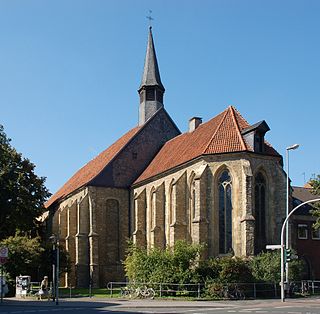
The Apostle Church in Münster is the main Protestant church in the city. It is located in the northern part of the historic old town, about halfway between St. Lamberti and the promenade belt. It was built as a monastery church of the Franciscans and is the first Gothic church building in Münster. From 1517 the Apostle Church was the monastery church of the Minorite monastery.
Sight 12: Überwasserkirche
Überwasserkirche is the common name of a Gothic hall church in Münster, North Rhine-Westphalia, Germany. It is a Liebfrauenkirche, dedicated to St. Mary. Officially St. Marien Überwasser, it is also called Liebfrauen-Überwasser. The name literally means "church beyond the water" and describes the location as on the other side of the Aa river, looking from the Münster Cathedral. It was inaugurated as part of an educational Stift in 1040, which later became the University of Münster.
Sight 13: Kettelersche Kurie
The Ketteler Curia on the Cathedral Square in Münster was built between 1712 and 1716 by the master builder Lambert Friedrich Corfey. The builder was Vicar General Nikolaus Hermann von Ketteler zu Harkotten, who decided in 1711 to build a curia on his property. The building still belongs to the Episcopal General Vicariate and is used as a residential building and archive. In the immediate vicinity of the Episcopal Palace, it forms a magnificent ensemble in the cathedral courtyard.
Sight 14: St.-Paulus-Dom
St. Paul's Cathedral is a Roman Catholic church in Münster under the patronage of the Apostle Paul. The cathedral of the Diocese of Münster is one of the most important church buildings in Münster and, along with the historic town hall, is one of the city's landmarks. The cathedral is administered by the cathedral chapter of Münster.
Sight 15: Bischöfliches Palais
The episcopal palace or the episcopal courtyard at Domplatz 27 in Münster is the residence of the Bishop of Münster and the seat of the episcopal general vicariate.
Sight 16: Archäologisches Museum
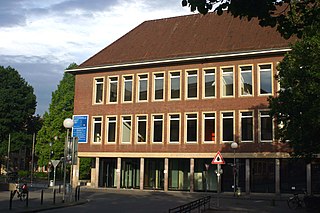
The Archaeological Museum of the University of Münster in the "Fürstenberghaus" on the Cathedral Square in Münster primarily serves the Institute of Classical Archaeology and Early Christian Archaeology of the University for teaching and research purposes. In addition, it offers the public an insight into the subject area of archaeology and shows working methods and research findings. The focus of the exhibition is on exhibits from Greek antiquity.
Sight 17: Geomuseum
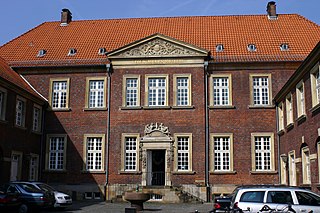
Since its opening in 1824, the Geomuseum of the University of Münster in Münster, Westphalia, which was called the Geological and Paleontological Museum until 2007, has been home to numerous fossils from a wide variety of geological eras in its exhibition. Since it was the only museum in Westphalia with a noteworthy collection of fossils for more than 150 years, many extraordinary finds came to Münster, which are exhibited in the museum and stored in the archive. In many cases, the sites are no longer accessible or exploited, so that some exhibits have considerable scientific value.
Wikipedia: Geologisch-Paläontologisches Museum Münster (DE), Website
Sight 18: Aegidiikirche
St. Aegidii, usually called Aegidiikirche, is a Roman Catholic church in the old town of Münster. Originally a Capuchin church, it took over its function and the Ägidius patronage after the demolition of the old Aegidii parish church. The monastery church, which was renovated by Johann Conrad Schlaun between 1724 and 1728, survived the bombing of Münster's city centre in the Second World War relatively unscathed.
Sight 19: St. Petri
St. Petri, also Petrikirche, is a Catholic church in Münster, Germany. As the church of the former Jesuit College, St. Peter's Church is the nucleus of the University of Münster. It is located not far from the cathedral in the university grounds between the Fürstenberghaus, the Faculty of Law and the Faculty of Catholic Theology on the Aa and today serves as the church of the Catholic Student and University Community of Münster (KSHG) and as the school church of the Paulinum Grammar School. Because of the good acoustics, the church is considered a preferred space for sacred concerts; in addition, St. Peter's Church is very much appreciated as a wedding church.
Sight 20: Fürstbischöfliches Schloss
Schloss Münster, officially Fürstbischöfliches Schloss Münster, is the schloss built as the residence of the prince-bishop of Münster, modern-day North Rhine-Westphalia, Germany. It was built between 1767 and 1787 in baroque style as a mansion for the last but one prince-bishop Maximilian Friedrich von Königsegg-Rothenfels. The architect was Johann Conrad Schlaun. Since 1954 it has been the seat and landmark of the University of Münster. The castle is built from the typical Baumberger sandstone of Münster.
Sight 21: Botanischer Garten
The Botanischer Garten Münster is a botanical garden maintained by the University of Münster.
Sight 22: Tuckesburg
The Tuckesburg is located on a small hill on the edge of the old zoo in Münster between Promenade, Himmelreichallee and Hüfferstraße. It was the home of Hermann Landois, built in 1892, where he lived from 17 March 1892 with his monkey "Lehmann" until his death. He had it built according to his ideas right next to the Zoological Garden he founded. There he called himself "Earl Tucks".
Share
How likely are you to recommend us?
Disclaimer Please be aware of your surroundings and do not enter private property. We are not liable for any damages that occur during the tours.
GPX-Download For navigation apps and GPS devices you can download the tour as a GPX file.
